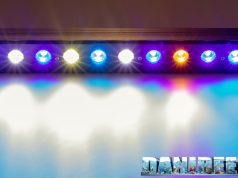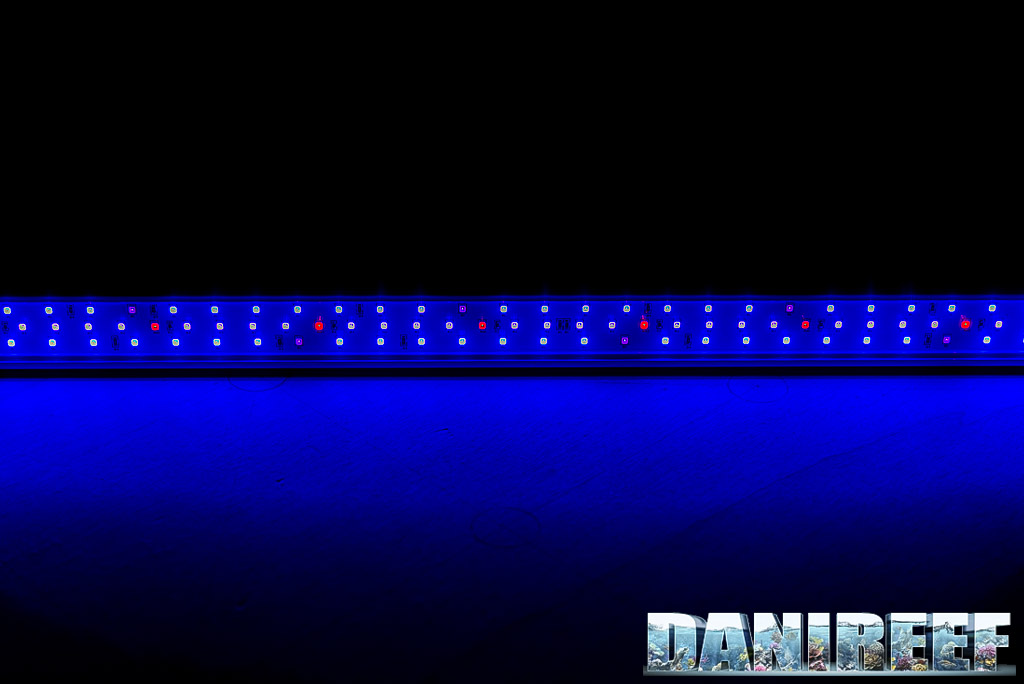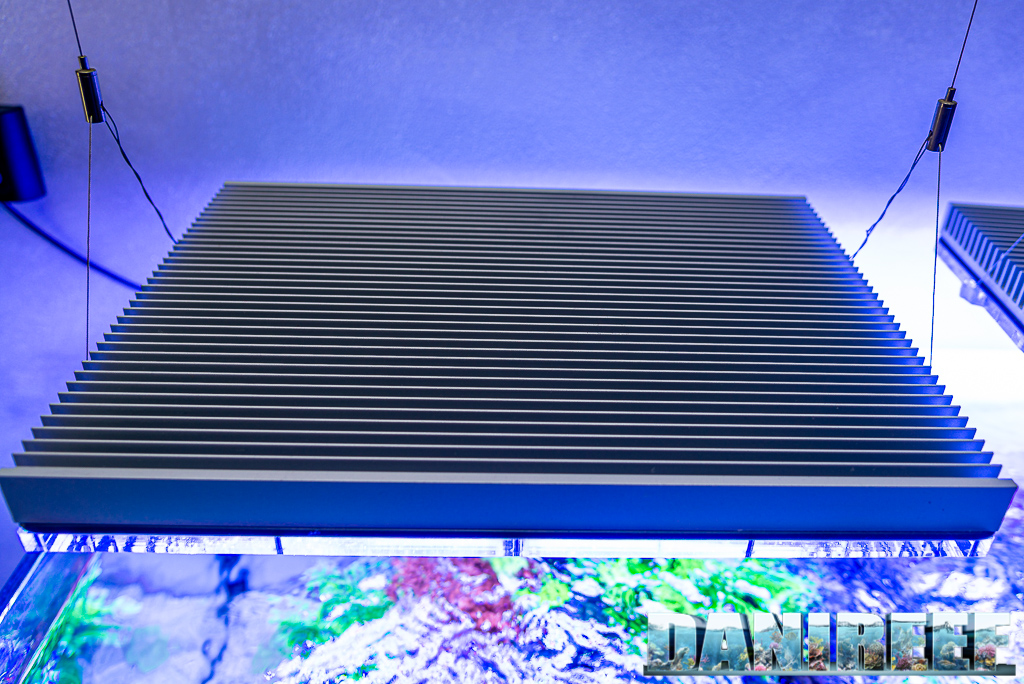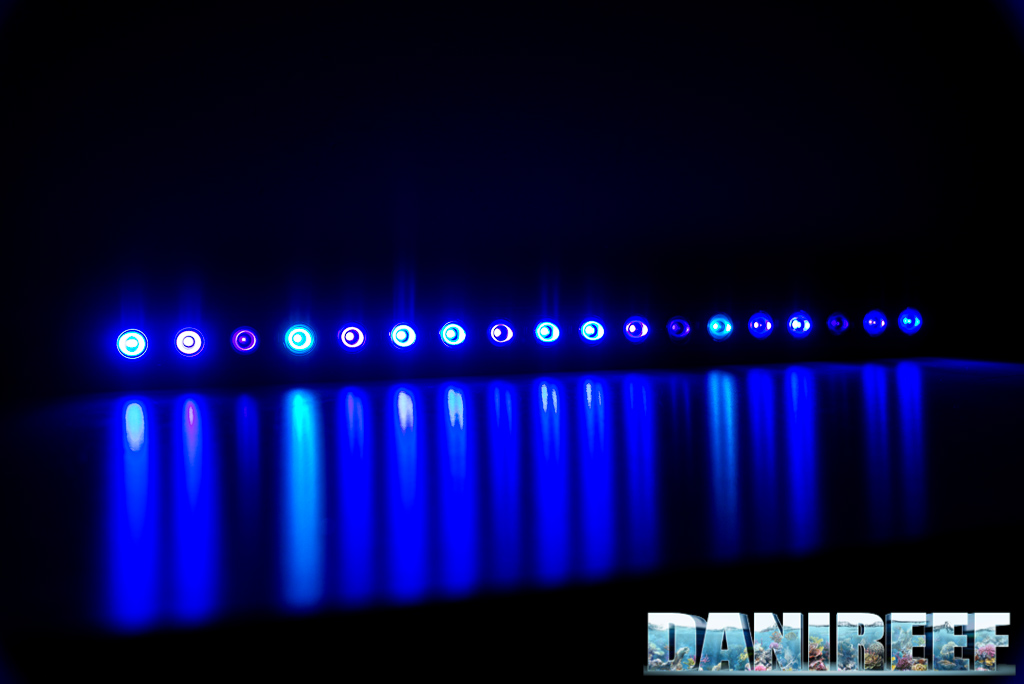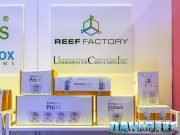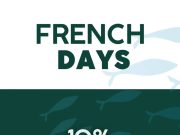How to value these numbers in aquarium?
This is a good question. At first we thought that we could transport these values to the aquarium tout-court. Than we filled the aquarium, insert the probe and redone the measurements. We fazed, but we’re going to talk about this in another article. Basically, while at 20 cm the result is practically the same, as we progressed, thanks to the glass reflecting the light and the same water, we found values bigger than the values measured in air. Obviously this isn’t a detail that can be standardized, so we think that our method of calculation is the most correct, and the best for the comparison of different ceiling lights.
Consumption
The measurement of the consumption was made possible thanks to the useful device RCE PM600 that can also measure the Cos(fi) (or power factor). The result is already given in watt.
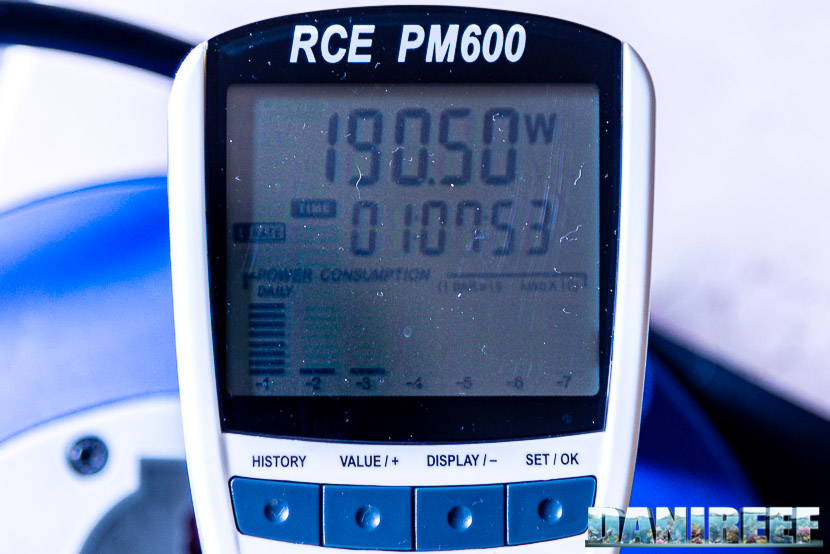
The calculus of the absorbed current, that is the power, is the following one:
Ceiling lights Philips CoralCare: 190,50 watt. Considering that at 17 cm the ceiling light has at the middle 2.088 μmol m-2 s-1, we can guess that it will have a peak value of 10,96 μmol m-2 s-1 w-1 (PAR per watt). The same value of the declared one of 190 w.
The cos(fi) is the same of the declared one. that is 0,98.
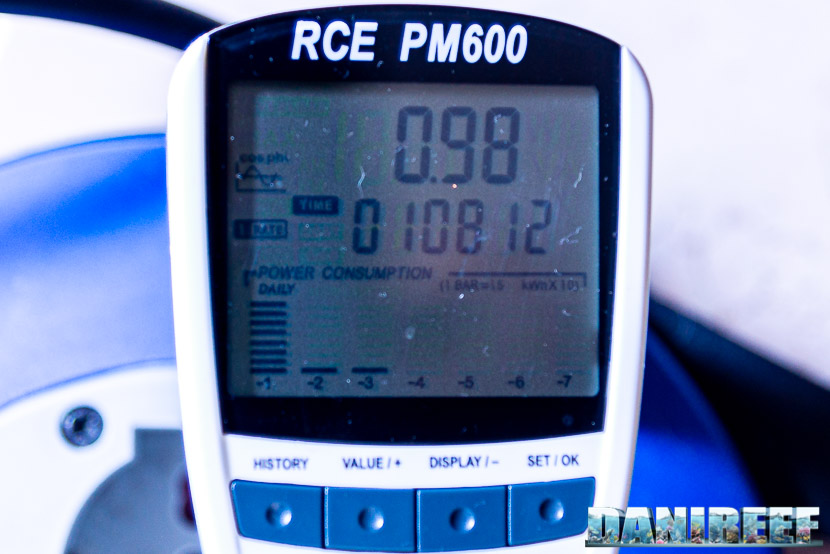
Maintaining Costs
The Philips CoralCare costs 749 euro.
The absorbed power is 190,5 watt, so the relationship cost/watt is about 3,93 euro per each watt. One of the best value we have ever measured until today.
The comparison with the other ceiling lights on the market
Recently we started to use the new Quantum Meter MQ-510 di Apogee. For this we can’t completely compare the data of other ceiling lights because before we used the probe Seneye. Sure the CoralCare is the first ceiling light to which we applied this method, so we will add many new comparisons in the next weeks. Actually, we have already measured the values of the Cetus 2 (italian preview), of the Aqamai LRM and LRS. In addiction, we have to think about the CoralCare as ceiling lights with diffused light, like the Orphek Atlantik V4 (test), that we will soon test again with the new method, the GNC 466 (review) and partially with the Maxspect Ethereal. The Orphek registered 1.515 PAR, the GNC 696 PAR while the Ethereal 689 PAR.
Remember that the PAR measurements have been done at 20 cm of distance in air (17 cm more or less of real distance)
| Ceiling light | PAR | Watt | Price | PAR/watt | euro per watt |
| GNC 466 | 696 (Seneye) | 120 | 1.400 euro | 5,8 spread | 11,7 |
| Orphek Atlantik V4 | 1.515 (Apogee) | 226 | 1.099 euro | 6,7 spread | 4,9 |
| Philips CoralCare 2018 | 2.088 (Apogee) | 190 | 749 euro | 11 spread | 3,9 |
| Maxspect Ethereal | 689 (Seneye) | 130 | 500 euro | 5,3 semi spread | 3,8 |
| Led bars Askoll Pure Marine | 237 (Apogee) | 28 | n.d. | 8,4 | |
| Zetlight UFO ZE-8000 | 791 (Seneye) | 91,5 | 500 euro | 8,6 cluster | 5,5 |
| Aqamai LRM | 1.088 (Seneye) | 87,5 | 465 euro | 12,4 double cluster | 5,2 |
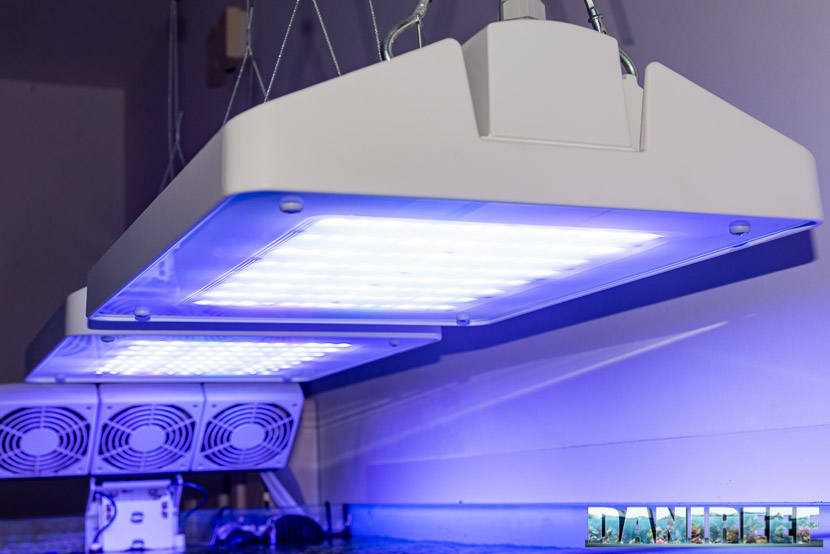
Practically, device in hand, the Philips CoralCare 2018 registered the higher value ever seen until now. The best PAR per watt value registered with the Apogee. And they’re second as global PAR per watt value. Speaking of price they’re still the best, second only to the Maxspect Ethereal.
Anyhow, the values compared with the data measured by the Seneye shouldn’t be so truthful, because they’re two different tools, one of which professional. The optimal covering, according to us, for very demanding corals SPS, it’s an area of 70×70 cm.

Maintaining costs
The ceiling lights Philips CoralCare cost 749 dollars.
The absorbed power is 190 watt, so a relationship cost/watt of about 3,9 euro per each watt. In order to make a comparison with the orher ceiling lights you can refer to this chart:
| Ceiling light | Price | Consumption | Relationship euro per watt | |
| Philips Coralcare 2018 | 749 euro | 190 watt | 3,9 euro per watt | . |
| Maxspect Ethereal | 500 euro | 126 watt | 4,0 euro per watt | Test (italian) |
| Radion XR30w G2 PRO | 790 euro | 170 watt | 4,7 euro per watt | Italian review |
| Radion XR30w G4 PRO | 915 euro | 190 watt | 4,8 euro per watt | Italian article |
| OceanLed Sunrise 600 | 870 euro | 180 watt | 4,8 euro per watt | Italian test |
| Orphek Atlantik V4 | 1099 euro | 226 watt | 4,9 euro per watt | Test |
| Radion XR30w G2 | 690 euro | 140 watt | 4,9 euro per watt | Italian review |
| Radion XR30w G4 | 760 euro | 150 watt | 5,1 euro per watt | Italian article |
| Aqamai LRM | 465 euro | 87,5 watt | 5,2 euro per watt | Test |
| Zetlight UFO ZE-8000 | 500 euro | 91,5 watt | 5,5 euro per watt | Test |
| CEAB Slide & Led | 2.700 euro | 275 watt | 9,8 euro per watt | Review |
| Sicce GNC 466 | 1.592 euro | 120 watt | 13,3 euro per watt | Italian review |
.
The ceiling light is very well built, sure it’s not so beautiful, the covering is almost perfect, and the application is very simple. The PAR are perfect for every coral at least until an area of 60×60 cm, but the covering can easily reach 80×80 cm. But what really is priceless are the supply inserted in the shell and the absence of vents. The cost per watt is the best among the measured ones and the PAR expressed are impressive. What else do you need?
Questions and comments, as always, are welcomed. And most of all, do you like our new measuring method?








